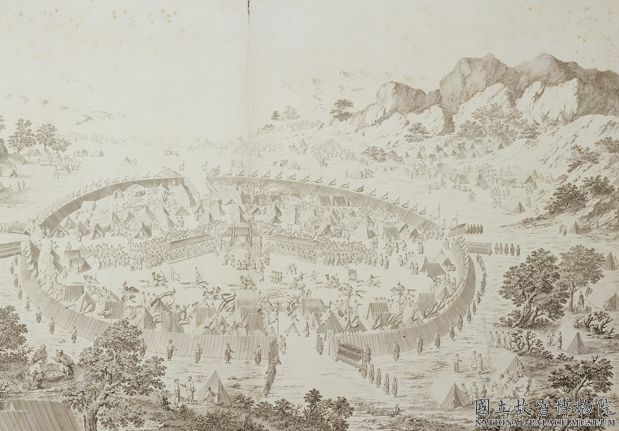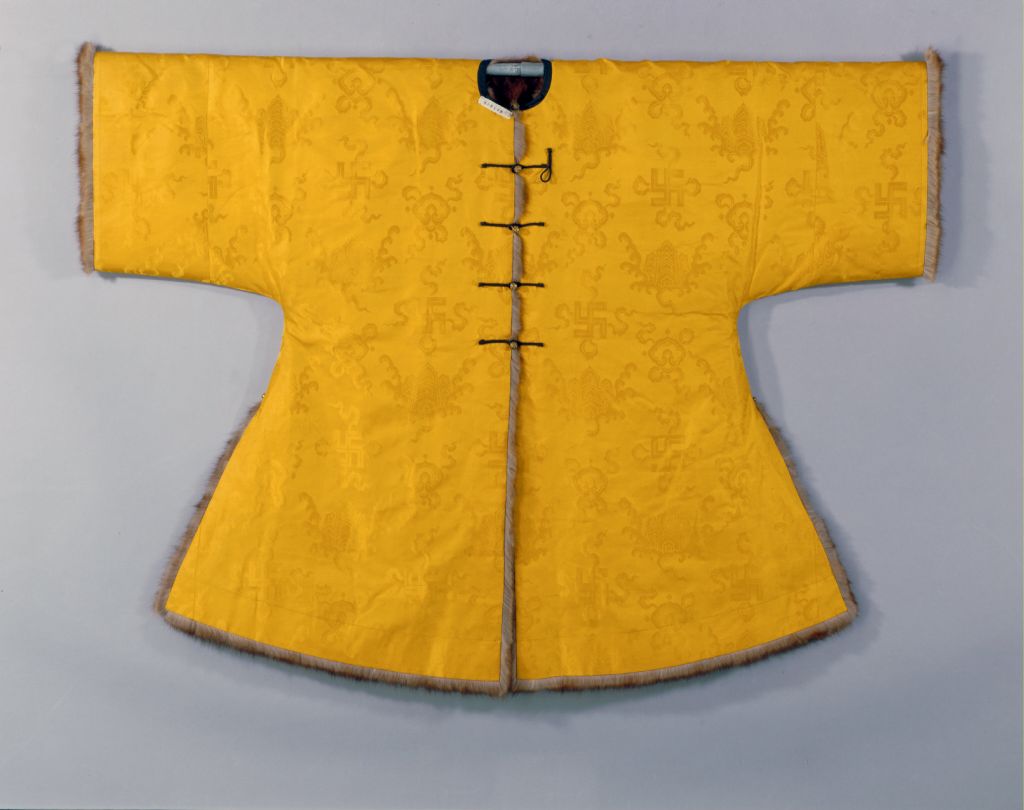[The Stele Book of Huashan Temple in the West of the Eastern Han Dynasty]
The Stele Book of Huashan Temple in the West of the Eastern Han Dynasty has 38 pages of rubbings, cut strips and mounted, with 3 lines and 6 words on each page. 22.3 cm vertically and 12.8 cm horizontally
This monument was erected in the eighth year of Yanxi (165 years), with official script, elegant and magnificent. “Eighth percents are the most dangerous in the Han Dynasty, which has opened the precedent of the Wei Stele” (Wang Xisun of the Qing Dynasty). The name of the person who wrote the book is rarely left on the stele of the Han Dynasty. At the end of the inscription, there is a famous inscription, “The book is accompanied by Xinfeng and Guo Xiang.”. The inscription records the ritual ceremony of the emperors of the past dynasties offering sacrifices to heaven and earth and the process of the rebuilding of the tablet of Huayue Temple presided over by Yuan Feng, the governor of Hongnong in the current dynasty
The original steles are described in Ouyang Xiu’s “Collection of Ancient Records” and Zhao Mingcheng’s “Jinshi Records”. According to the records of Luo Tianxiang in the Yuan Dynasty and Guo Zongchang in the Ming Dynasty, the stele was destroyed in the late Song Dynasty and the early Yuan Dynasty. Rubbings handed down from generation to generation are rare, and there are four credible ones. One is the Changyuan Rubbings, named after Wensunzang, the king of Changyuan in the Ming Dynasty. The second is the Huayin edition, which was collected by Huayin Dongzhaoshang Brothers and Guo Zongchang in the Ming Dynasty, also known as the Guanzhong edition. The third is the four Ming books, which were collected by the Fengxi Wanjuan Tower and Fanqin Tianyi Pavilion in Ningbo in the Ming Dynasty. Ningbo was known as the four Ming in ancient times. Fourth, Shunde Ben, named after Li Wentian, Shunde, was saved in the Qing Dynasty
Huayin thick ink is refined. The first to seventeen lines of the original tablet have more than one hundred words, which is later than Changyuan and Shunde, about between the Song and Yuan dynasties. The attached page contains more than 230 inscriptions and postscripts of Guo Zongchang, Wang Duo, Weng Fanggang, Ruan Yuan, etc. Among them, Wang Hong wrote a postscript: “advocating that Han Li should have the same achievements as Changli Wen for eight generations”; Zhu Junba studied the glyph structure of the inscription from the theory of six books to prove the gradual changes of seal, official script and regular script; Zhu Xigeng’s postscript recounts the spread and collection of various rubbings of Huashan Stele in detail, which has high academic value
Books such as Li Shi by Song Hongshi and the Stele of Huashan Temple in the West of Yanxi in the Han Dynasty by Ruan Yuan in the Qing Dynasty are also recorded.
![图片[1]-Stele Book of Huashan Temple in the Eastern Han Dynasty-China Archive](https://chinaarchive.net/Song dynasty/Inscription/615[1024].jpg)
![西岳华山庙碑册-碑额之一 图片[2]-Stele Book of Huashan Temple in the Eastern Han Dynasty-China Archive](https://chinaarchive.net/Song dynasty/Inscription/628.jpg) 西岳华山庙碑册-碑额之一
西岳华山庙碑册-碑额之一![西岳华山庙碑册-碑额之二 图片[3]-Stele Book of Huashan Temple in the Eastern Han Dynasty-China Archive](https://chinaarchive.net/Song dynasty/Inscription/629.jpg) 西岳华山庙碑册-碑额之二
西岳华山庙碑册-碑额之二![西岳华山庙碑册-碑额之三 图片[4]-Stele Book of Huashan Temple in the Eastern Han Dynasty-China Archive](https://chinaarchive.net/Song dynasty/Inscription/630[1024].jpg) 西岳华山庙碑册-碑额之三
西岳华山庙碑册-碑额之三![西岳华山庙碑册-碑文之一 图片[5]-Stele Book of Huashan Temple in the Eastern Han Dynasty-China Archive](https://chinaarchive.net/Song dynasty/Inscription/631[1024].jpg) 西岳华山庙碑册-碑文之一
西岳华山庙碑册-碑文之一![西岳华山庙碑册-碑文之二 图片[6]-Stele Book of Huashan Temple in the Eastern Han Dynasty-China Archive](https://chinaarchive.net/Song dynasty/Inscription/632[1024].jpg) 西岳华山庙碑册-碑文之二
西岳华山庙碑册-碑文之二![西岳华山庙碑册-碑文之三 图片[7]-Stele Book of Huashan Temple in the Eastern Han Dynasty-China Archive](https://chinaarchive.net/Song dynasty/Inscription/633[1024].jpg) 西岳华山庙碑册-碑文之三
西岳华山庙碑册-碑文之三![西岳华山庙碑册-碑文之四 图片[8]-Stele Book of Huashan Temple in the Eastern Han Dynasty-China Archive](https://chinaarchive.net/Song dynasty/Inscription/634[1024].jpg) 西岳华山庙碑册-碑文之四
西岳华山庙碑册-碑文之四![西岳华山庙碑册-碑文之五 图片[9]-Stele Book of Huashan Temple in the Eastern Han Dynasty-China Archive](https://chinaarchive.net/Song dynasty/Inscription/635[1024].jpg) 西岳华山庙碑册-碑文之五
西岳华山庙碑册-碑文之五![西岳华山庙碑册-碑文之六 图片[10]-Stele Book of Huashan Temple in the Eastern Han Dynasty-China Archive](https://chinaarchive.net/Song dynasty/Inscription/636[1024].jpg) 西岳华山庙碑册-碑文之六
西岳华山庙碑册-碑文之六![西岳华山庙碑册-碑文之七 图片[11]-Stele Book of Huashan Temple in the Eastern Han Dynasty-China Archive](https://chinaarchive.net/Song dynasty/Inscription/637[1024].jpg) 西岳华山庙碑册-碑文之七
西岳华山庙碑册-碑文之七![西岳华山庙碑册-碑文之八 图片[12]-Stele Book of Huashan Temple in the Eastern Han Dynasty-China Archive](https://chinaarchive.net/Song dynasty/Inscription/638[1024].jpg) 西岳华山庙碑册-碑文之八
西岳华山庙碑册-碑文之八![西岳华山庙碑册-碑文之九 图片[13]-Stele Book of Huashan Temple in the Eastern Han Dynasty-China Archive](https://chinaarchive.net/Song dynasty/Inscription/639[1024].jpg) 西岳华山庙碑册-碑文之九
西岳华山庙碑册-碑文之九![西岳华山庙碑册-碑文之十 图片[14]-Stele Book of Huashan Temple in the Eastern Han Dynasty-China Archive](https://chinaarchive.net/Song dynasty/Inscription/640[1024].jpg) 西岳华山庙碑册-碑文之十
西岳华山庙碑册-碑文之十![西岳华山庙碑册-碑文之十一 图片[15]-Stele Book of Huashan Temple in the Eastern Han Dynasty-China Archive](https://chinaarchive.net/Song dynasty/Inscription/641[1024].jpg) 西岳华山庙碑册-碑文之十一
西岳华山庙碑册-碑文之十一![西岳华山庙碑册-碑文之十二 图片[16]-Stele Book of Huashan Temple in the Eastern Han Dynasty-China Archive](https://chinaarchive.net/Song dynasty/Inscription/642[1024].jpg) 西岳华山庙碑册-碑文之十二
西岳华山庙碑册-碑文之十二![西岳华山庙碑册-碑文之十三 图片[17]-Stele Book of Huashan Temple in the Eastern Han Dynasty-China Archive](https://chinaarchive.net/Song dynasty/Inscription/643[1024].jpg) 西岳华山庙碑册-碑文之十三
西岳华山庙碑册-碑文之十三![西岳华山庙碑册-碑文之十四 图片[18]-Stele Book of Huashan Temple in the Eastern Han Dynasty-China Archive](https://chinaarchive.net/Song dynasty/Inscription/644[1024].jpg) 西岳华山庙碑册-碑文之十四
西岳华山庙碑册-碑文之十四![西岳华山庙碑册-碑文之十五 图片[19]-Stele Book of Huashan Temple in the Eastern Han Dynasty-China Archive](https://chinaarchive.net/Song dynasty/Inscription/645[1024].jpg) 西岳华山庙碑册-碑文之十五
西岳华山庙碑册-碑文之十五![西岳华山庙碑册-碑文之十六 图片[20]-Stele Book of Huashan Temple in the Eastern Han Dynasty-China Archive](https://chinaarchive.net/Song dynasty/Inscription/646[1024].jpg) 西岳华山庙碑册-碑文之十六
西岳华山庙碑册-碑文之十六![西岳华山庙碑册-封底 图片[21]-Stele Book of Huashan Temple in the Eastern Han Dynasty-China Archive](https://chinaarchive.net/Song dynasty/Inscription/665[1024].jpg) 西岳华山庙碑册-封底
西岳华山庙碑册-封底

![[Qing Dynasty] British female painter—Elizabeth Keith, using woodblock prints to record China from the late Qing Dynasty to the early Republic of China—1915-China Archive](https://chinaarchive.net/wp-content/uploads/2022/11/image-191x300.png)



